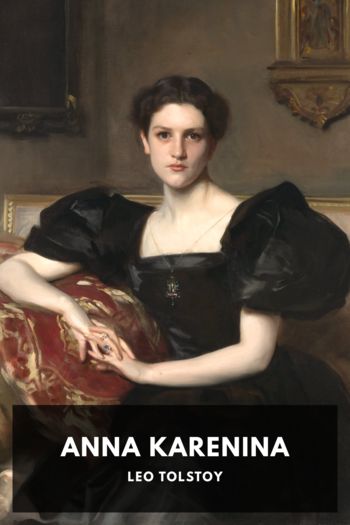What Is Art? Leo Tolstoy (good books to read for 12 year olds TXT) 📖

- Author: Leo Tolstoy
Book online «What Is Art? Leo Tolstoy (good books to read for 12 year olds TXT) 📖». Author Leo Tolstoy
And the consequence of this absence of true art showed itself, inevitably, in the corruption of that class which nourished itself on the false art. All the confused, unintelligible theories of art, all the false and contradictory judgments on art, and particularly the self-confident stagnation of our art in its false path, all arise from the assertion, which has come into common use and is accepted as an unquestioned truth, but is yet amazingly and palpably false, the assertion, namely, that the art of our upper classes65 is the whole of art, the true, the only, the universal art. And although this assertion (which is precisely similar to the assertion made by religious people of the various Churches who consider that theirs is the only true religion) is quite arbitrary and obviously unjust, yet it is calmly repeated by all the people of our circle with full faith in its infallibility.
The art we have is the whole of art, the real, the only art, and yet two-thirds of the human race (all the peoples of Asia and Africa) live and die knowing nothing of this sole and supreme art. And even in our Christian society hardly one percent of the people make use of this art which we speak of as being the whole of art; the remaining ninety-nine percent live and die, generation after generation, crushed by toil and never tasting this art, which moreover is of such a nature that, if they could get it, they would not understand anything of it. We, according to the current aesthetic theory, acknowledge art either as one of the highest manifestations of the Idea, God, Beauty, or as the highest spiritual enjoyment; furthermore, we hold that all people have equal rights, if not to material, at any rate to spiritual well-being; and yet ninety-nine percent of our European population live and die, generation after generation, crushed by toil, much of which toil is necessary for the production of our art which they never use, and we, nevertheless, calmly assert that the art which we produce is the real, true, only art—all of art!
To the remark that if our art is the true art everyone should have the benefit of it, the usual reply is that if not everybody at present makes use of existing art, the fault lies, not in the art, but in the false organisation of society; that one can imagine to oneself, in the future, a state of things in which physical labour will be partly superseded by machinery, partly lightened by its just distribution, and that labour for the production of art will be taken in turns; that there is no need for some people always to sit below the stage moving the decorations, winding up the machinery, working at the piano or French horn, and setting type and printing books, but that the people who do all this work might be engaged only a few hours per day, and in their leisure time might enjoy all the blessings of art.
That is what the defenders of our exclusive art say. But I think they do not themselves believe it. They cannot help knowing that fine art can arise only on the slavery of the masses of the people, and can continue only as long as that slavery lasts, and they cannot help knowing that only under conditions of intense labour for the workers, can specialists—writers, musicians, dancers, and actors—arrive at that fine degree of perfection to which they do attain, or produce their refined works of art; and only under the same conditions can there be a fine public to esteem such productions. Free the slaves of capital, and it will be impossible to produce such refined art.
But even were we to admit the inadmissible, and say that means may be found by which art (that art which among us is considered to be art) may be accessible to the whole people, another consideration presents itself showing that fashionable art cannot be the whole of art, viz. the fact that it is completely unintelligible to the people. Formerly men wrote poems in Latin, but now their artistic productions are as unintelligible to the common folk as if they were written in Sanskrit. The usual reply to this is, that if the people do not now understand this art of ours, it only proves that they are undeveloped, and that this has been so at each fresh step forward made by art. First it was not understood, but afterwards people got accustomed to it.
“It will be the same with our present art; it will be understood when everybody is as well educated as are we—the people of the upper classes—who produce this art,” say the defenders of our art. But this assertion is evidently even more unjust than the former; for we know that the majority of the productions of the art of the upper classes, such as various odes, poems, dramas, cantatas, pastorals, pictures, etc., which delighted the people of the upper classes when they were produced, never were afterwards either understood or valued by the great masses of mankind, but have remained, what they were at first, a mere pastime for rich people of their time, for whom alone they ever were of any importance. It is also often urged in proof of the assertion that the people will some day understand our art, that some productions of so-called “classical” poetry, music, or painting, which formerly did not please the masses, do—now that they have





Comments (0)